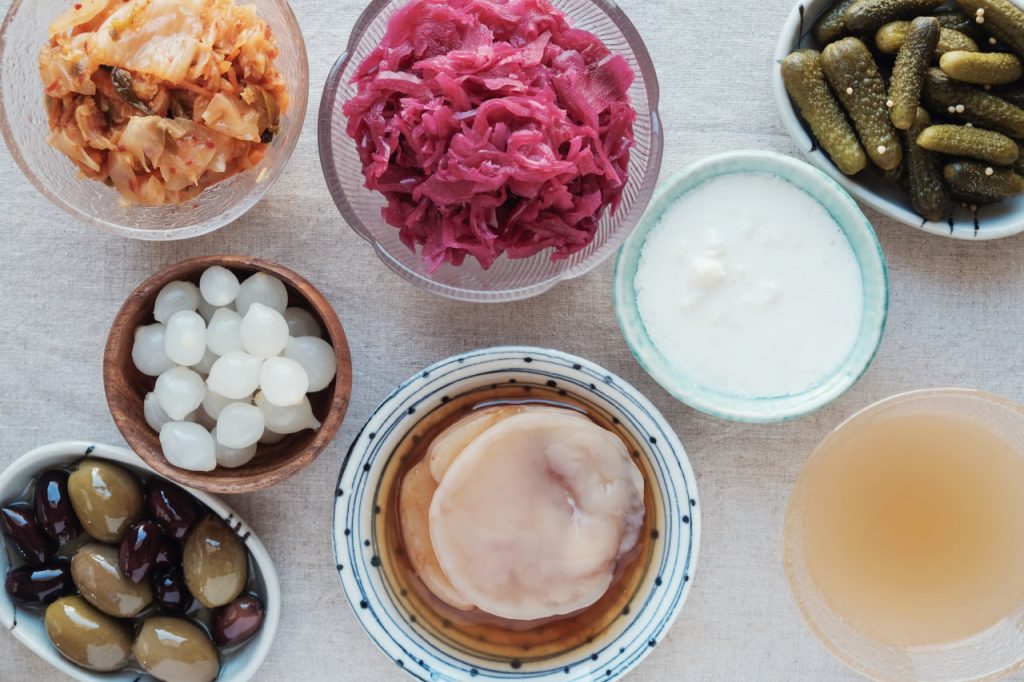I’ve always been someone who enjoys cooking, but if I’m being honest, my kitchen repertoire has mostly consisted of quick weeknight meals and the occasional weekend roast. I loved trying out new recipes, but I often found myself stuck in a culinary routine. Sure, I could whip up a solid stir-fry or pasta dish, but something was missing. I wanted more depth, more complexity in my cooking, and more connection to the food I was preparing.
That’s when I found Korean Fermented Kitchen. A friend had recommended their fermentation workshop, and while I didn’t think I needed to learn how to make kimchi or doenjang (fermented soybean paste), I was intrigued. Little did I know, that class would completely transform the way I approached food and cooking.
A New Understanding of Flavors
Before taking the fermentation class, I had always thought of flavor as something you added on top of the dish—spices, sauces, and seasonings. But at Korean Fermented Kitchen, I learned that flavor starts at the very core of the ingredients themselves, especially through fermentation.
Fermentation isn’t just about making food last longer or adding a tangy bite. It’s about unlocking deep, rich flavors that can’t be replicated by any other method. Whether it’s the savory umami of doenjang or the spicy, sour complexity of kimchi, fermentation brings a completely new dimension to your food.
In our class, we made kimchi, gochujang (fermented chili paste), and jeotgal (fermented seafood), and I was amazed at how each ingredient transformed into something much more than the sum of its parts. The kimchi, for example, wasn’t just a spicy condiment—it was a harmony of flavors: spicy, sour, salty, and umami all in one bite. I never fully appreciated how each of those elements worked together until I made it myself.
The Magic of Homemade Ferments
Once I completed the workshop, I couldn’t wait to get home and start fermenting my own ingredients. What I didn’t expect was how empowering it would feel to create my own ferments from scratch. The process is surprisingly straightforward, but the rewards are huge. Every time I open a jar of kimchi or spoon out some homemade gochujang, I feel a deep sense of satisfaction.
I began incorporating fermented ingredients into every dish I made. It wasn’t just about adding gochujang to my stir-fries (although I do that now)—it was about experimenting with how fermentation could change the flavor dynamics of my meals. I started using kimchi as a base for soups and stews, adding layers of flavor that made each dish more complex. Even simple things like scrambled eggs became an opportunity to elevate the flavor by adding a spoonful of doenjang.
The beauty of fermentation is that it doesn’t just change the flavor of individual dishes—it enhances the entire cooking process. Now, when I cook, I’m thinking about the balance of flavors, the different fermentations I’ve created, and how each one can bring something special to the table.
Understanding Patience and Process
Before attending the class, I was a little impatient in the kitchen. I liked getting things done quickly and efficiently. But fermentation is all about patience. It’s a slow process that requires time and attention, whether you’re waiting for kimchi to ferment or allowing a batch of gochujang to deepen in flavor.
What fermentation has taught me is that great food often requires patience. This lesson has translated to other aspects of my cooking as well. I now take more time to appreciate the process of cooking, and I’m more intentional about the ingredients I use. I’ve started making my own stocks, curing my own meats, and even experimenting with slow-braised dishes—all inspired by the patience I learned from fermentation.
A Cultural Connection
One of the most rewarding aspects of my experience at Korean Fermented Kitchen was the connection to Korean culture. Fermentation isn’t just a cooking technique; it’s an essential part of Korean identity. Our instructor, Soojin, didn’t just teach us how to make kimchi—she shared the stories behind these ancient traditions, explaining how fermentation connects people to their history, their family, and their land.
As I started fermenting more at home, I felt that same connection. I wasn’t just cooking food; I was preserving an ancient tradition, connecting with the culture behind the dishes, and sharing that with my family and friends. Every jar of kimchi or gochujang I make now carries with it a story—a story of fermentation, patience, and a deep respect for the ingredients.
The Ripple Effect in My Cooking
Since taking the fermentation workshop, I’ve noticed a dramatic shift in my cooking. It’s not just about making new dishes—it’s about rethinking the way I approach food altogether. Fermentation has become the foundation of my kitchen. I now make my own fermented condiments, experiment with different flavors, and embrace the process of slow cooking.
My meals are more vibrant and complex, and I feel a deeper sense of connection to the food I prepare. From kimchi tacos to doenjang-infused soups, my cooking has transformed into something far more flavorful and creative. I now understand that the ingredients I use aren’t just products—they’re living, breathing components of a story that’s been passed down for generations.
Why You Should Take the Leap
If you’ve ever wondered how to take your cooking to the next level or explore a deeper connection with food, I highly recommend attending a fermentation class at Korean Fermented Kitchen. Whether you’re a beginner or an experienced cook, the hands-on experience and expert guidance will open your eyes to a whole new world of flavors, techniques, and cultural traditions.
Fermentation isn’t just a cooking method—it’s a mindset. It’s about slowing down, embracing the process, and discovering the deep, complex flavors that nature has to offer. Since taking the class, my cooking has become richer, more diverse, and more intentional. And I couldn’t be more grateful for the journey that Korean Fermented Kitchen has taken me on.

